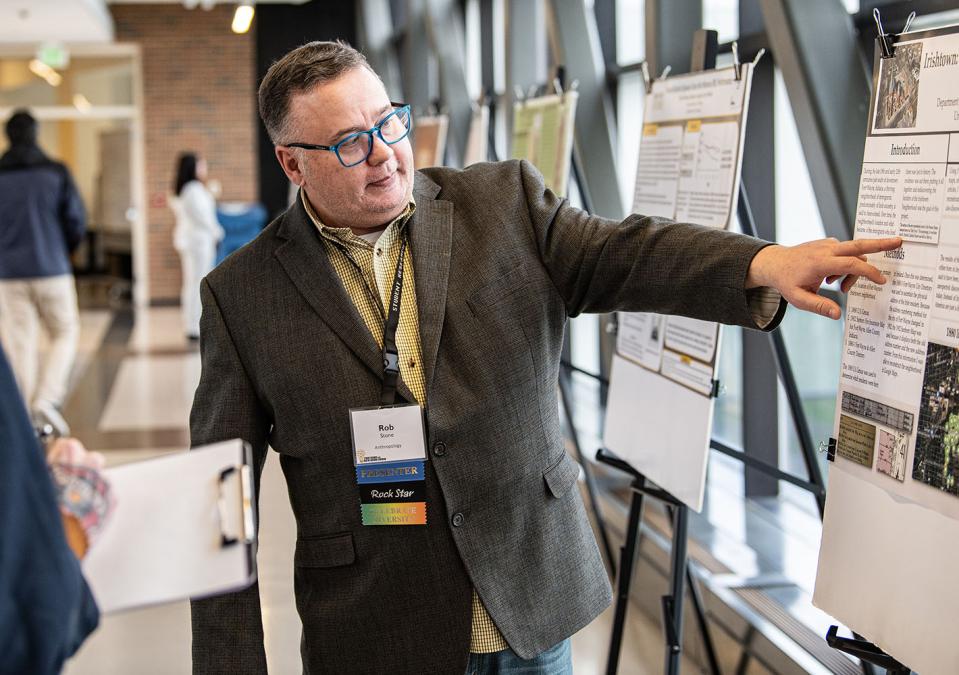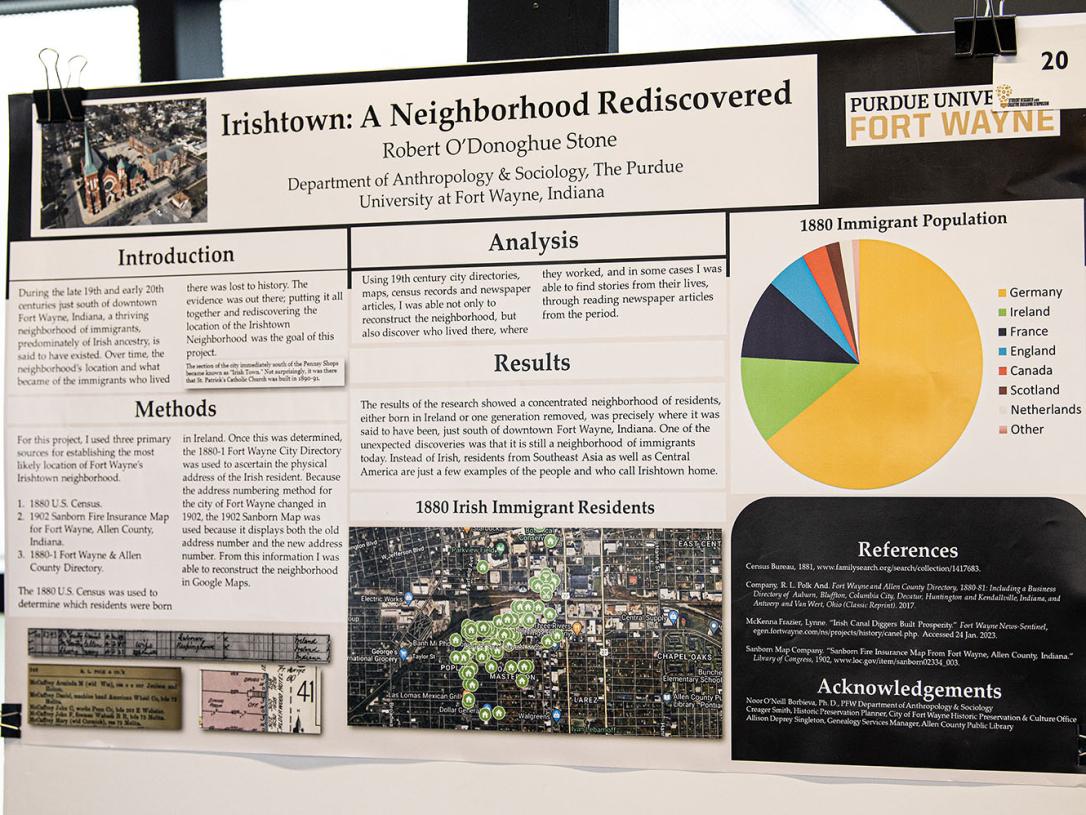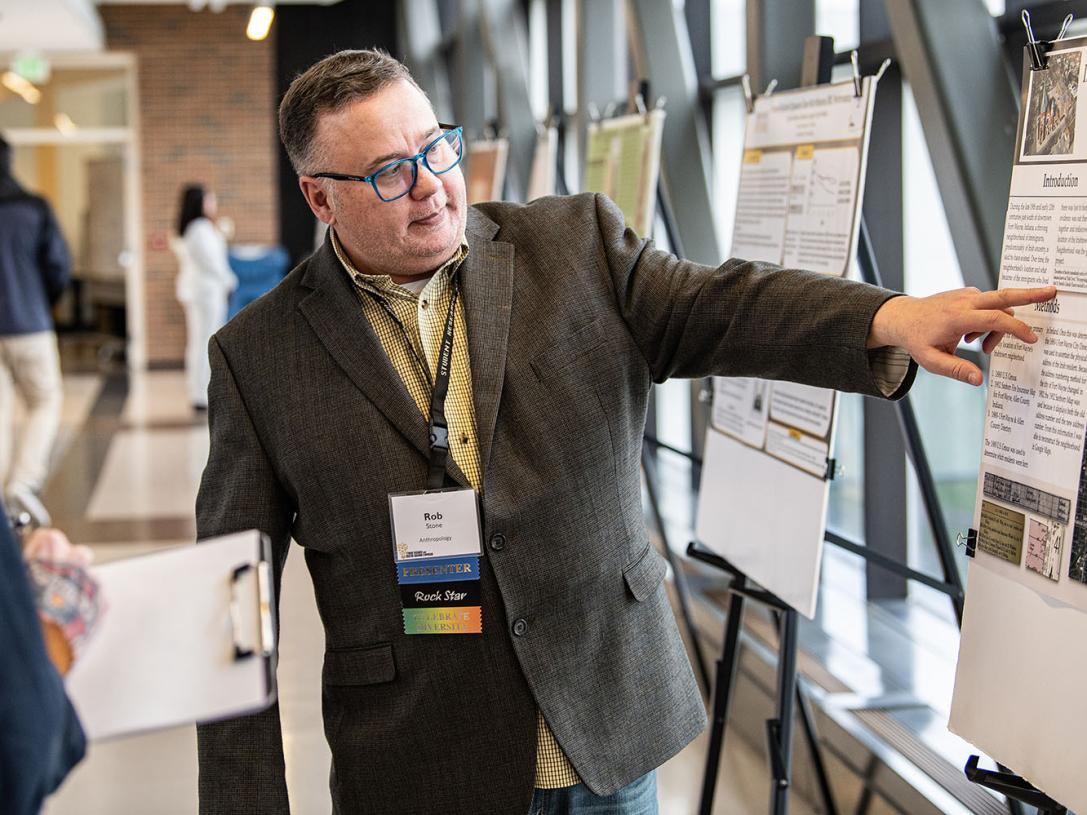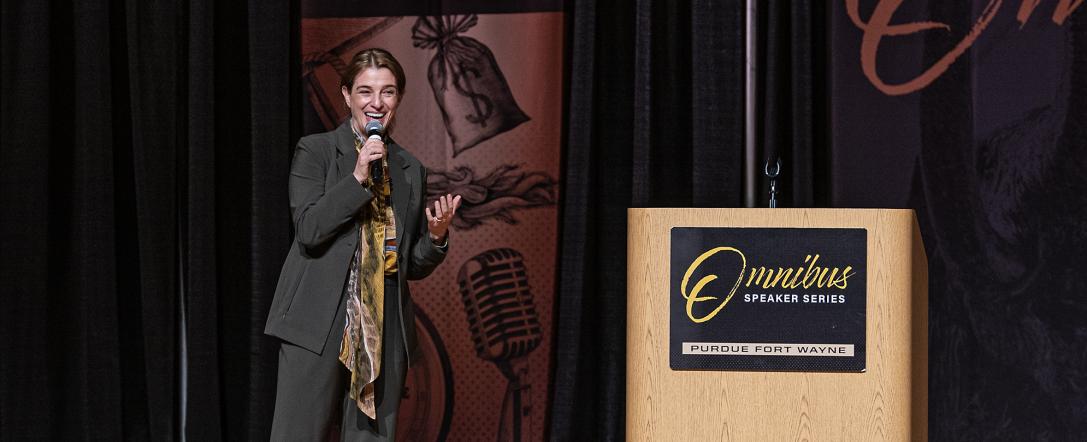
PFW Story
Research of long-forgotten ‘Irishtown’ illuminates new career path for PFW student
After 27 years as an information technology professional, Rob Stone figured the pandemic was the perfect time to reassess.
“I got my first IT job, and 27 years later I blinked and was in my 50s and didn’t have a degree,” Stone said.
Without that degree, Stone could only rise so far in terms of title and pay structure in his position at the time—and he was burned out. Now 55, Stone had always loved studying human history, so he started taking anthropology classes at Purdue University Fort Wayne. Stone had been writing history-based articles for years as a hobby, using the pen name O’Donoghue because it’s his grandmother’s maiden name.
As part of his new academic direction, Stone started researching to write a book on the history of the Irish in Fort Wayne. About a year-and-a-half into that process, he came across a News-Sentinel article at The History Center that included, “The section of the city immediately south of the Pennsy Shops became known as ‘Irish Town.’” The Pennsy Shops were part of the Pennsylvania Railroad Depot.
Stone felt a charge. Was an entire section of town filled with Irish? How did that happen, and why doesn’t anyone remember?
The more Stone dug in, the more he realized he’d found a second book topic that superseded the first. Using genealogy records, newspaper articles, the 1880 United States Census, the 1880–01 Fort Wayne City Directory, and the 1902 Sanborn Fire Insurance Map of the city, Stone discovered a neighborhood full of Irish immigrants.
Bordered just south of downtown by Calhoun, Creighton, and Fairfield streets and ending at the railroad tracks to the north, the neighborhood included an estimated 1,100 Irish immigrants. Saint Patrick’s Catholic Church at 2120 South Harrison was built in 1890–91 to serve the community.
Fort Wayne has long celebrated its German history, and there are always stories about its Native American roots, but the Irish history has been mostly overlooked. City founders Allen Hamilton and Samuel Hanna were of Irish descent, and even founding namesake General Anthony Wayne was the son of an Irish immigrant.
Many came from the East Coast to work on the Wabash and Erie Canal. It ran through Fort Wayne, which was the waterway’s highest point above sea level— its “summit.”
“The reason they worked on the railroad and the canal was because they couldn’t get a job anywhere else,” Stone said. “Nobody wanted to hire the Irish because they saw them as a threat. When they came to Fort Wayne, it just so happened that the canal was going through, and they were very well accepted here because the founders of the city were Irish.”
Stone estimates the Irish started arriving in the 1830s, and the neighborhood lasted until the 1910s or 1920s.
“Just like with any neighborhood population, the subsequent generations get better and better jobs outside of the neighborhood and move away,” Stone said.
As he continues finding more individual stories, Stone hopes to publish “Irishtown: Stories from an Emigrant Neighborhood” within the next year. Then he’ll resume writing his initial book about the broader history of the Irish in Fort Wayne.
Fort Wayne city officials have taken notice of Stone’s research and are considering different options to highlight the area. His research was recently honored with a Dean’s Choice Award representing the College of Liberal Arts during PFW’s 26th annual Student Research and Creative Endeavor Symposium.
Stone plans to graduate in May 2024 with an anthropology degree and continue researching Fort Wayne’s historical topics. He’d love to write a third book to study the history of the Miami Indians.
“I want this to be a launching pad for me as a non-fiction writer and historian,” he said. “This is the kind of stuff that keeps me grounded because every semester I take new classes, and I get new ideas that are cool or lead me in another direction. This project has kept me focused on what I want to do eventually.”







